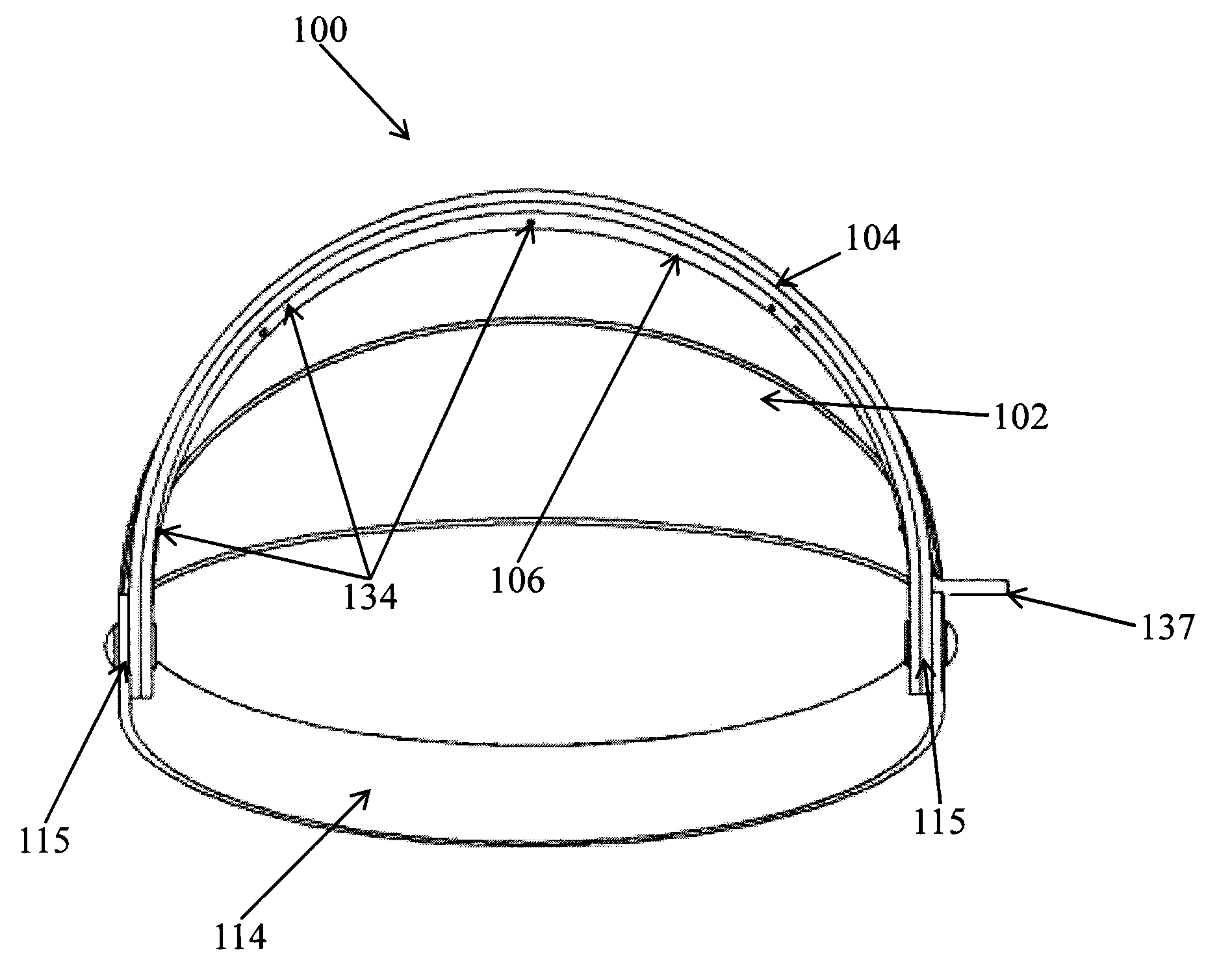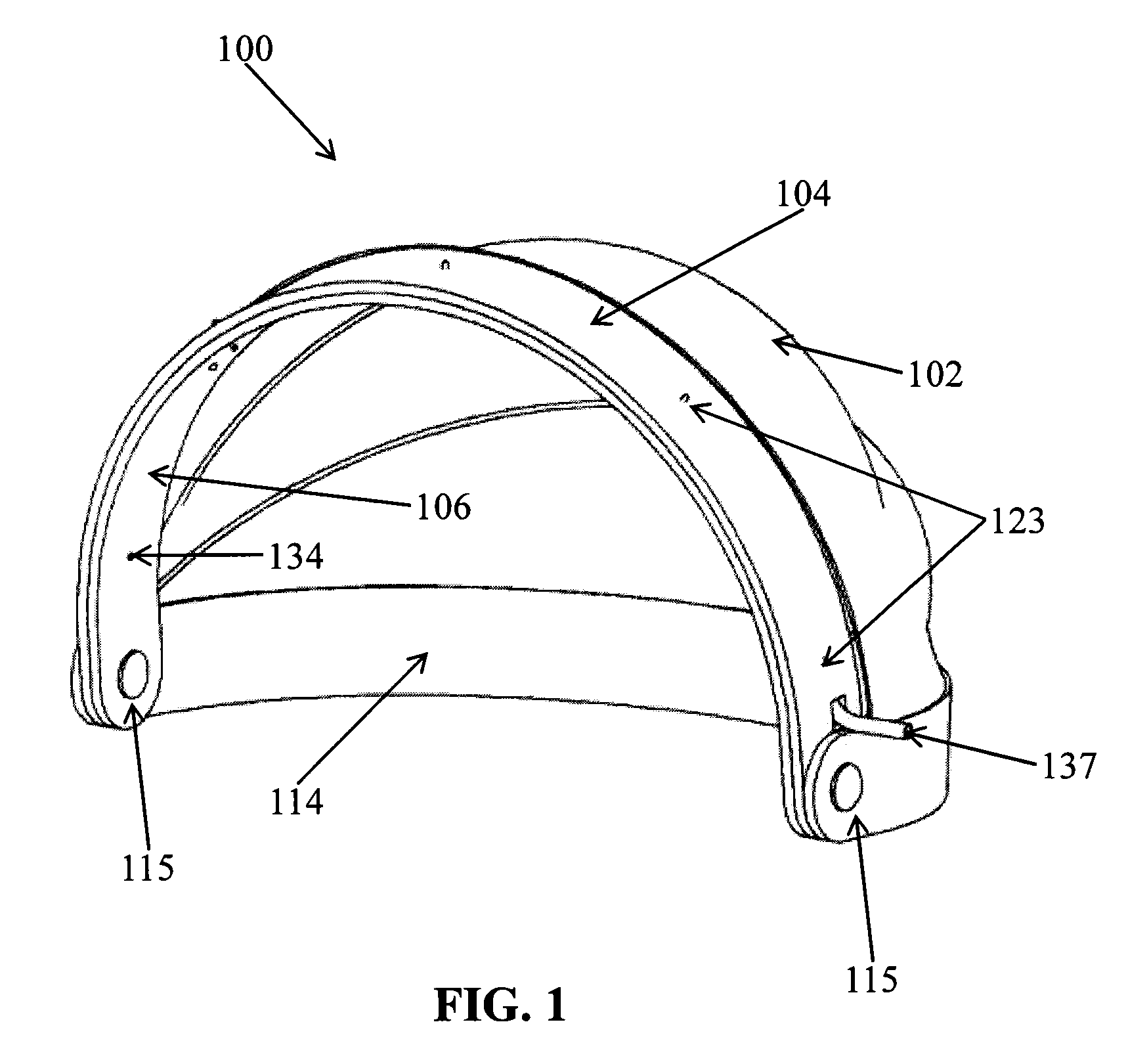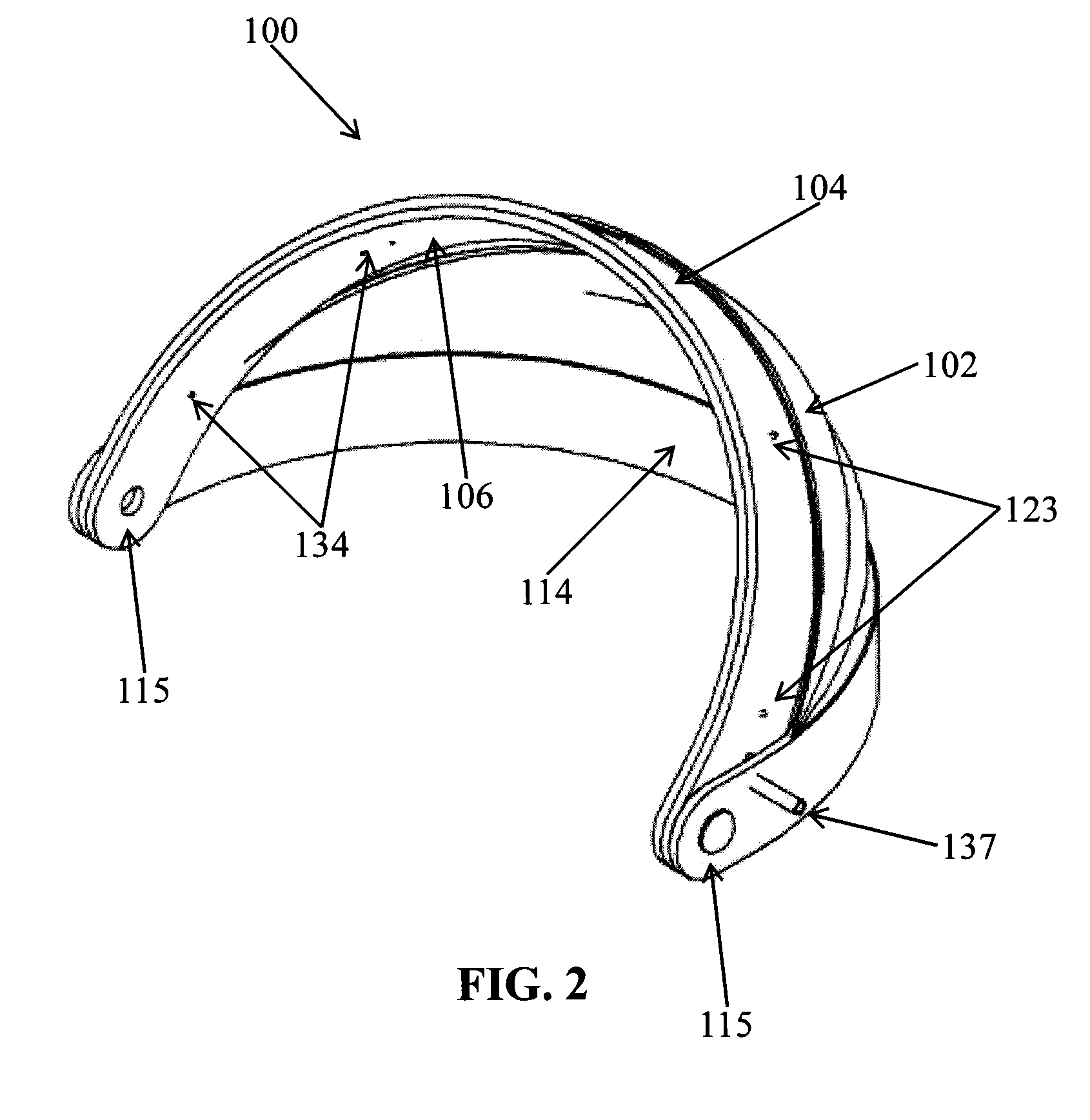Respiratory treatment delivery system
a technology of respiratory treatment and delivery system, which is applied in the field of medical care, can solve the problems of reducing the ability and efficacy of the lungs to transfer oxygen into the bloodstream, children who suffer blood oxygen levels outside, and scarring progress, so as to reduce the chance of harmful gas and humidity buildup, reduce the use and buildup of ambient gases, and be more transportable
- Summary
- Abstract
- Description
- Claims
- Application Information
AI Technical Summary
Benefits of technology
Problems solved by technology
Method used
Image
Examples
Embodiment Construction
[0031]Referring to FIG. 1, there is illustrated one embodiment of a respiratory treatment system 100 according to the present invention. This embodiment comprises three main components: a base support member 114, an optional hood 102, and an integration center 104. The integration center 104 further comprises a gas distribution system 106, with one or more gas inlet ports 137 and one or more gas delivery ports 134. The gas delivery ports 134 disperse oxygen or other therapeutic gases out of the concave side, or inside, of the respiratory treatment system 100. General operation of the respiratory treatment system 100 in FIG. 1 is to provide respiratory treatment to a patient resting under the concave side of the apparatus by delivering therapeutic gases, particularly oxygen from an oxygen source or oxygen concentrator, into the gas inlet ports 137, and then directing that gas towards the patient through the gas distribution system 106 and gas delivery ports 134. The gas flow and dire...
PUM
 Login to View More
Login to View More Abstract
Description
Claims
Application Information
 Login to View More
Login to View More - R&D
- Intellectual Property
- Life Sciences
- Materials
- Tech Scout
- Unparalleled Data Quality
- Higher Quality Content
- 60% Fewer Hallucinations
Browse by: Latest US Patents, China's latest patents, Technical Efficacy Thesaurus, Application Domain, Technology Topic, Popular Technical Reports.
© 2025 PatSnap. All rights reserved.Legal|Privacy policy|Modern Slavery Act Transparency Statement|Sitemap|About US| Contact US: help@patsnap.com



